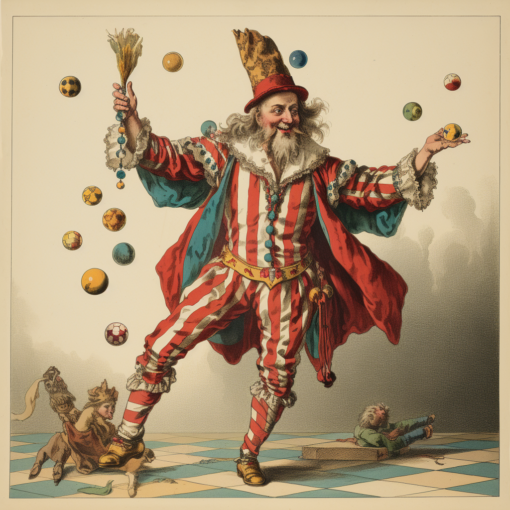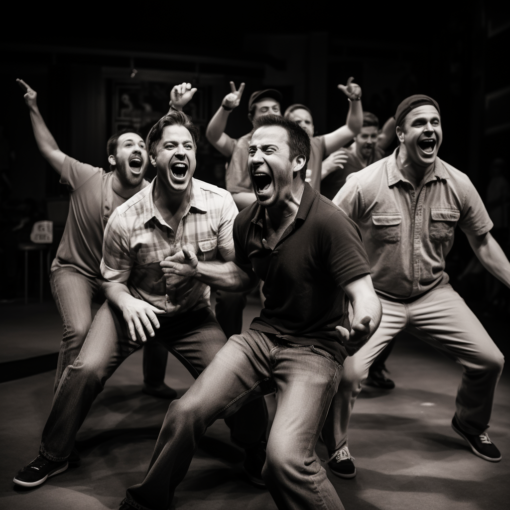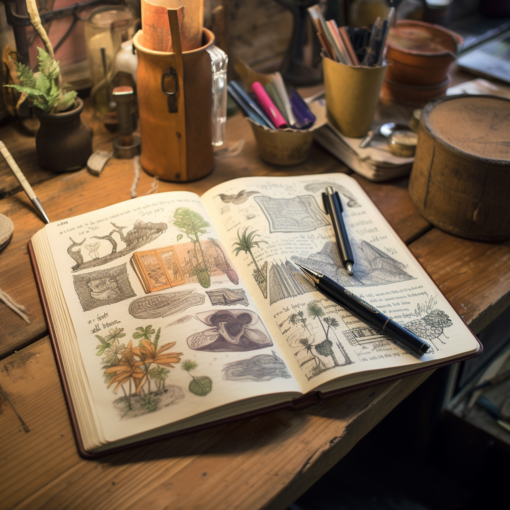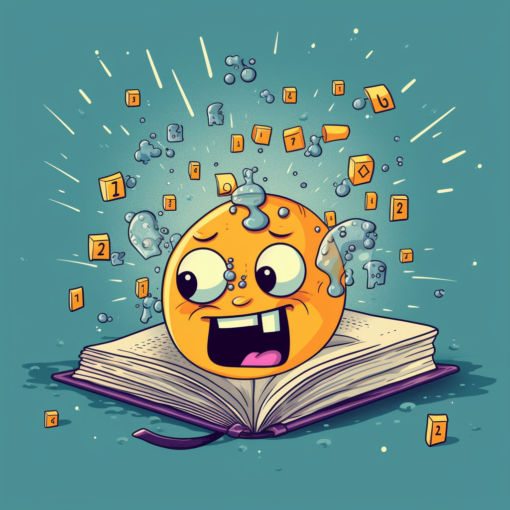Greetings, dear reader! It is I, Percival Q. Higginbottom, once again at your service. Today, I invite you to embark on a journey that dances on the razor’s edge between the comedic and the macabre. We venture into the world of dark humor, a genre often misunderstood and yet inherently fascinating.
Dark humor, also known as black comedy or gallows humor, is an unusual breed of comedy that draws laughter from topics usually regarded as serious, somber, or taboo. These subjects might include death, disease, disaster, and all the other cruel jests life throws our way. Yet, in the hands of a skilled humorist, even these grim realities can become fodder for a wry chuckle or a rueful grin.
So, why do we laugh when faced with the unsavory or the morose? Psychologists suggest that dark humor acts as a coping mechanism, a way for us to grapple with our fears and anxieties by laughing in the face of adversity. It allows us to confront our mortal coil’s frailty while also finding an element of absurdity in it.
From the biting satire of Jonathan Swift’s “A Modest Proposal” to the irreverent social commentary of modern TV shows like “Rick and Morty,” dark humor has been an integral part of our cultural narrative. It pokes fun at our individual and collective fears, bringing them into the light and letting us laugh at them, disarming them of their power to some extent.
However, it’s crucial to recognize that the line between dark humor and offensiveness is a thin one. To appreciate dark humor is to understand the balance between provocation and respect, between making a point and crossing a line. It’s a delicate dance, a skill that takes a certain level of wisdom and emotional intelligence to pull off successfully.
Yet, when done right, dark humor can be immensely cathartic. It allows us to laugh at the absurdity of our existence, the chaotic unpredictability of life, and the grim inevitability of death. It reminds us that it’s okay to chuckle in the face of the bleak, as long as we remember to extend empathy and understanding alongside our laughter.
In the words of the legendary comedian George Carlin, “I think it’s the duty of the comedian to find out where the line is drawn and cross it deliberately.” Dark humor, in its unique, unsettling, yet undeniably captivating way, does just that.
As we part ways on this moonlit exploration of humor, remember that laughter, even at the gloomiest of topics, is a testament to the human spirit’s resilience. Whether we chuckle, cackle, or merely smirk, every moment of levity is a small act of rebellion against the solemnity of existence.
So, dear reader, here’s to the jesters who make us chuckle amidst the chaos, the comedians who turn our fears into farce, and the joy of finding humor in the heart of darkness. Until next time, keep laughing, keep pondering, and keep exploring the world with a twinkle in your eye and a grin on your face.
Yours in jest and joviality,
Percival Q. Higginbottom

Suggested Further Reading:
- The Psychology of Dark Humor – Verywell Mind: A comprehensive article delving into the psychological aspects of dark humor, its impact on mental health, and the research surrounding it.
- Understanding Dark Humor – Masterclass: An article providing an in-depth look at the historical context, styles, and examples of dark humor in different forms of media.
- The Art of Dark Humor – BBC Culture: A rich analysis of how dark humor has been used in British comedy, with some notable examples and commentary from comedians.





10 thoughts on “Whistling Past the Graveyard: An Exploration of Dark Humor”
Your point of view caught my eye and was very interesting. Thanks. I have a question for you.
Your article helped me a lot, is there any more related content? Thanks!
Thank you for your sharing. I am worried that I lack creative ideas. It is your article that makes me full of hope. Thank you. But, I have a question, can you help me?
Your article helped me a lot, is there any more related content? Thanks! https://accounts.binance.com/cs/register?ref=S5H7X3LP
Thanks for sharing. I read many of your blog posts, cool, your blog is very good.
Thanks for sharing. I read many of your blog posts, cool, your blog is very good.
Your point of view caught my eye and was very interesting. Thanks. I have a question for you. https://www.binance.com/join?ref=P9L9FQKY
Your point of view caught my eye and was very interesting. Thanks. I have a question for you. https://www.binance.com/lv/register?ref=SMUBFN5I
Heard some buzz about jili711. Gonna try it out and see if I can hit the jackpot. Let’s do this! I am pumped so see this jili711!
Hey, just passing by to give dewabetvn8 a quick review. Dewabet is pretty reliable and dewabetvn8 is just another good option for getting some fun. Check em out dewabetvn8.